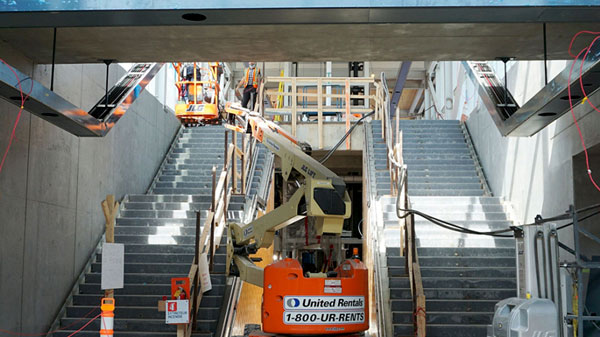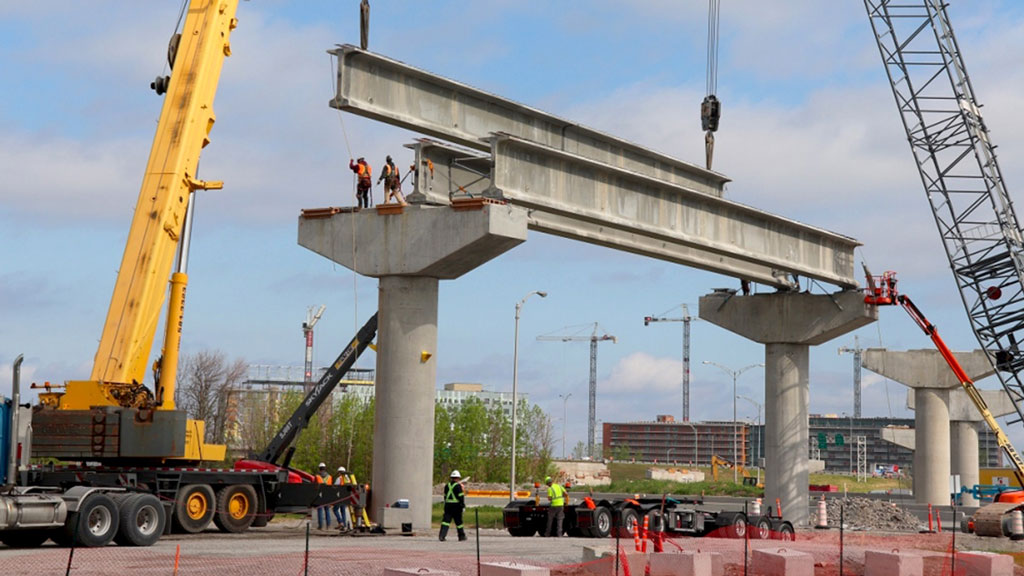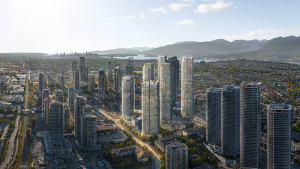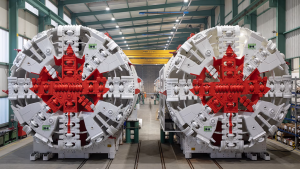Montrealers serving on a recent Urban Land Institute panel offered multiple reasons for their city’s commercial real estate renaissance, but their enthusiasm was greatest when talking about the transformative nature of the REM light rail project.
The first phase of the 26-station, 67-kilometre automated transit line is slated to open before the end of the year. The network, a project of CDPQ Infra with billions in support from the Quebec government and the Canada Infrastructure Bank, will initially link the South Shore to downtown Montreal.
Future phases will connect Deux-Montagnes, Trudeau airport and Dorval, Pointe-Claire, Kirkland and Ste-Anne-de-Bellevue along Highway 40.
All of which had Marc Hetu, a senior vice-president for apartments with CBRE, counting the ways the REM has stimulated the residential investment market in the city. Hetu was one of five panellists at the ULI Toronto webinar billed as Pulse Check Montreal.
“In terms of how the REM has positively impacted the residential market, for obvious reasons it’s opened up new markets for my investors who look for large multi-residential projects to invest in,” said Hetu. “It helps them tick an extra box which is accessibility and transport in pockets of the city that previously were just non-starters for them.”
Key regions opening up for developers are the West Island, the South Shore and the North Shore, Hetu said.
“That’s been wonderful. It will contribute to greater investment volume, it will contribute to appreciation of housing values and the net worth of individuals, all of which will be very positive for the greater Montreal area and its economic growth.”
A second phase, the REM de l’est, will extend as far east as Pointe-aux-Trembles.

Panellist Steve Potvin, a principal with Stantec Quebec with responsibilities for urban design, also discussed development opportunities on the South Shore and to the east and pointed out that the connection between downtown and the airport had been a “real problem” for the city.
“There’s a lot of opportunities in the future with all the land that can be redeveloped,” said Potvin.
“You’re going to have the Montreal before REM and the Montreal after REM. It is a very important shift.”
The panellists said other factors contributing to what was termed a “20-year bull run” for Canada’s second largest real estate market included good planning, with a solid master plan developed in the 1990s; a strong educational system that is training workers for Montreal’s growing tech sector; significant public infrastructure including spending on the Champlain Bridge and the Turcot interchange in addition to the REM; a multicultural and multilingual environment that has attracted 65 international organizations; and strong municipal leadership, including current Mayor Valerie Plante.
The language issue which once drove talent away no longer seems to be a deterrent to investment, suggested Sarah Arbique, a senior director of leasing with Canderel.
“Things have changed,” said Arbique. “Montreal is on the map. It’s been seen as an investment opportunity and a significant draw for investors contemplating where to expand their operations.
“Montreal is definitely part of the big leagues now.”
Altus Group team lead Diana Pricop opened up the ULI event with an economic snapshot.
Total real estate investment activity has greatly expanded since 2019, from $8.8 billion to $10.5 billion in 2021, and the value of property transactions per quarter has also risen significantly, reaching $700 million in Q4 of 2021, topping previous highs in Q3 2021 and Q2 2019.
Industrial availability rates have declined from 3.7 per cent in 2019 to 3.1 per cent in 2021, and industrial rental rates continue to climb, reaching $9.81 per square foot in 2021.
That is a telling statistic said Sam Tsoumas, co-CEO of the developer Rosefellow, because Montreal up until recently had almost no new product on the industrial side due to stagnant development in the sector. But no longer.
“We very rarely in the past ever built on spec,” he said. “We’re talking about an increase of almost $3 a foot versus brand new product that was being developed in 2015 and 2016, so it’s been incredible what’s happened over the past few years.”
Tsoumas noted Montreal has been fully participating in the e-commerce and distribution boom as most large centres have. Montreal had always been a manufacturing and R&D city, he said.
“I think that just created a whole new industry in the industrial sector that was never contemplated before.”
Follow the author on Twitter @DonWall_DCN.











Recent Comments